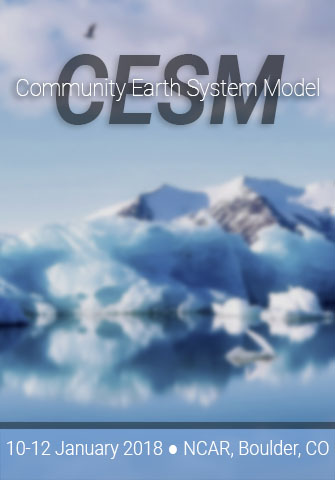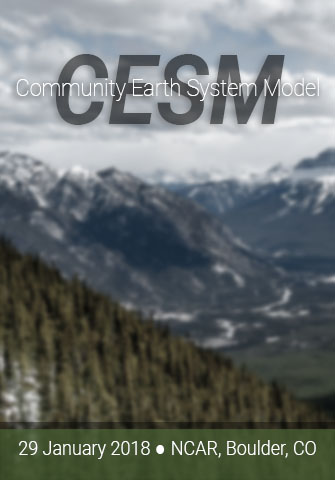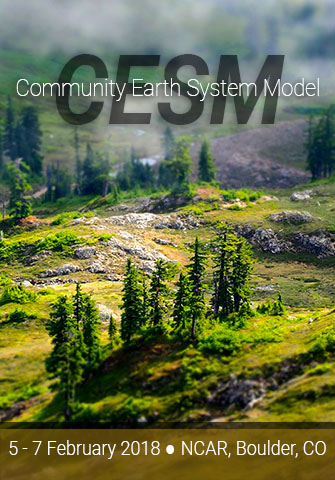| Overview of CAM/CESM2 developments | Julio Bacmeister |
| CESM2 coupled-climate simulations | Cecile Hannay |
| NorESM2 based on CESM2: Preliminary experience from running pre-historic spin-up and historical simulations | Oeyvind Seland |
| Seasonal/sub-seasonal forecasting using CESM | Joe Tribbia |
| Dycore sensitivity of Hadley circulation changes under warming | Thomas Toniazzo |
| Improved model performance through parallel coupling of physics and dynamics | Aaron Donahue |
| Updated results from the 2016 Dynamical Core Model Intercomparison Project | Christiane Jablonowski |
| FV3-powered models at GFDL: From climate-scale to convective-scale | Xi Chen |
| What can real-time weather forecasts using SE and MPAS teach us about CESM? | Colin Zarzycki |
| Physics-dynamics coupling with element based high-order Galerkin methods: Quasi equal-area physics grid | Adam Herrington |
| Dynamical core requirements for CAM moving forward | Peter Lauritzen |
| U.S. summertime surface warm bias in models: A summary from the CAUSES project | Hsi-Yen Ma |
| Evolution of the double-ITCZ and cold tongue biases from CESM1 to CESM2 | Matt Woelfle |
| Resolution of physics? Improving tropical skill in CAM hindcasts | Richard Neale |
| Impacts of atmospheric processes on ENSO asymmetry: A comparison between CESM1 and CCSM4 | Tao Zhang |
| Investigating the role of wind and precipitation biases on the equatorial Pacific cold tongue bias in CESM through a hindcast approach | Angela C. Siongco |
| Forcing and feedbacks in CESM | Andrew Gettelman |
| CGD Seminar: Organized Convection Parameterization for GCMs | Mitch Moncrieff |
| Timestep sensitivity in MG2 microphysics | Peter Caldwell |
| Modernization of the E3SM single-column model | Peter Bogenschutz |
| Prospecrive for new CAM developments on ice microphysics | Xiaohong Liu |
| Comparing standard CAM5 against "CALIPSO Cirrus CAM5" and the need for a better parameterization of cirrus clouds | David Mitchell |
| Quasi-3-D multiscale modeling framework as a physics option in CAM-SE | Joon-Hee Jung |
| CLUBB's momentum fluxes | Vincent Larson |
| A new and iproved analytic double Gaussian PDF | Brian Griffin |
| Using DART tools for CAM development | Kevin Raeder |




